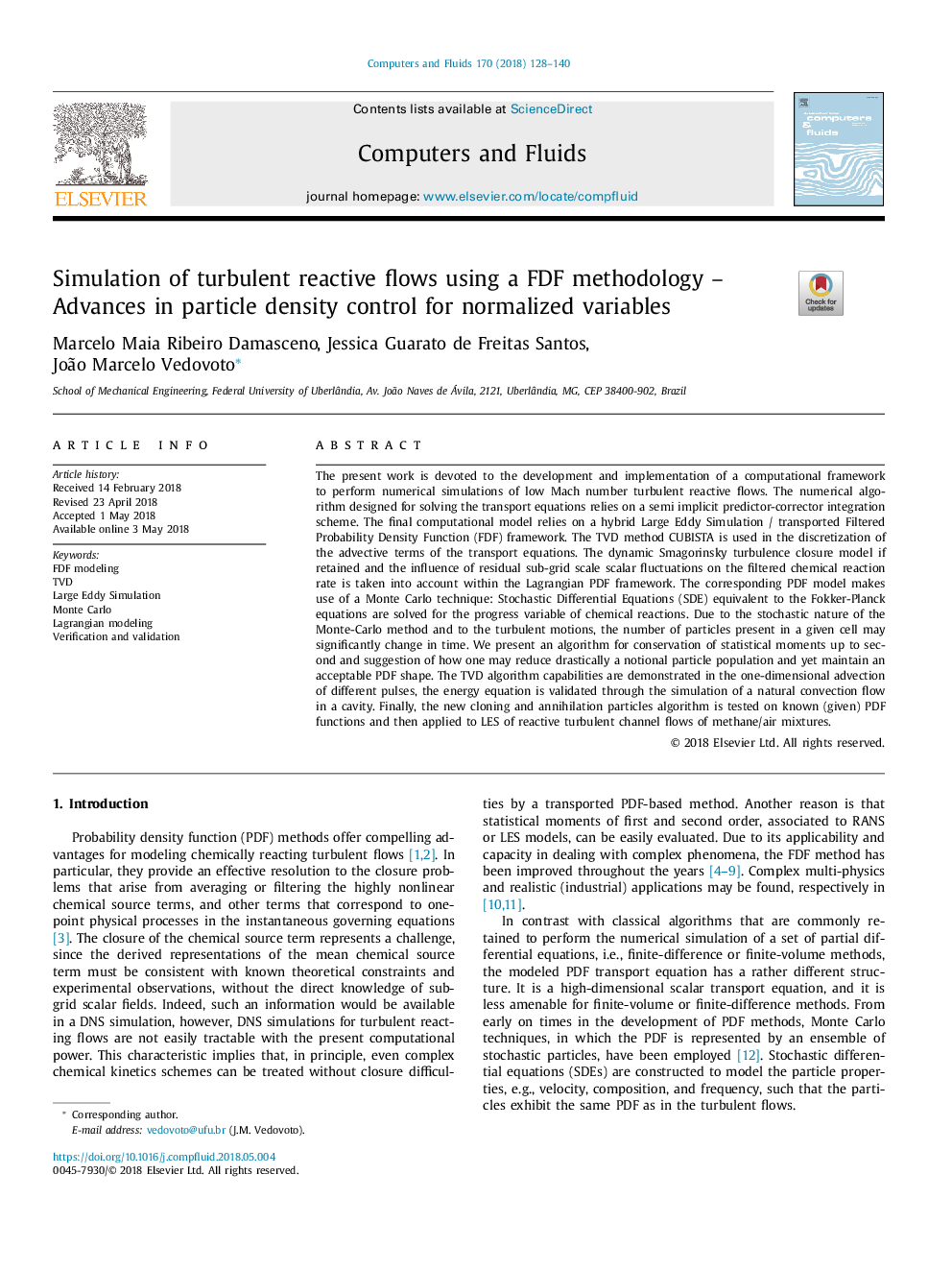| Article ID | Journal | Published Year | Pages | File Type |
|---|---|---|---|---|
| 7156008 | Computers & Fluids | 2018 | 13 Pages |
Abstract
The present work is devoted to the development and implementation of a computational framework to perform numerical simulations of low Mach number turbulent reactive flows. The numerical algorithm designed for solving the transport equations relies on a semi implicit predictor-corrector integration scheme. The final computational model relies on a hybrid Large Eddy Simulation / transported Filtered Probability Density Function (FDF) framework. The TVD method CUBISTA is used in the discretization of the advective terms of the transport equations. The dynamic Smagorinsky turbulence closure model if retained and the influence of residual sub-grid scale scalar fluctuations on the filtered chemical reaction rate is taken into account within the Lagrangian PDF framework. The corresponding PDF model makes use of a Monte Carlo technique: Stochastic Differential Equations (SDE) equivalent to the Fokker-Planck equations are solved for the progress variable of chemical reactions. Due to the stochastic nature of the Monte-Carlo method and to the turbulent motions, the number of particles present in a given cell may significantly change in time. We present an algorithm for conservation of statistical moments up to second and suggestion of how one may reduce drastically a notional particle population and yet maintain an acceptable PDF shape. The TVD algorithm capabilities are demonstrated in the one-dimensional advection of different pulses, the energy equation is validated through the simulation of a natural convection flow in a cavity. Finally, the new cloning and annihilation particles algorithm is tested on known (given) PDF functions and then applied to LES of reactive turbulent channel flows of methane/air mixtures.
Related Topics
Physical Sciences and Engineering
Engineering
Computational Mechanics
Authors
Marcelo Maia Ribeiro Damasceno, Jessica Guarato de Freitas Santos, João Marcelo Vedovoto,
